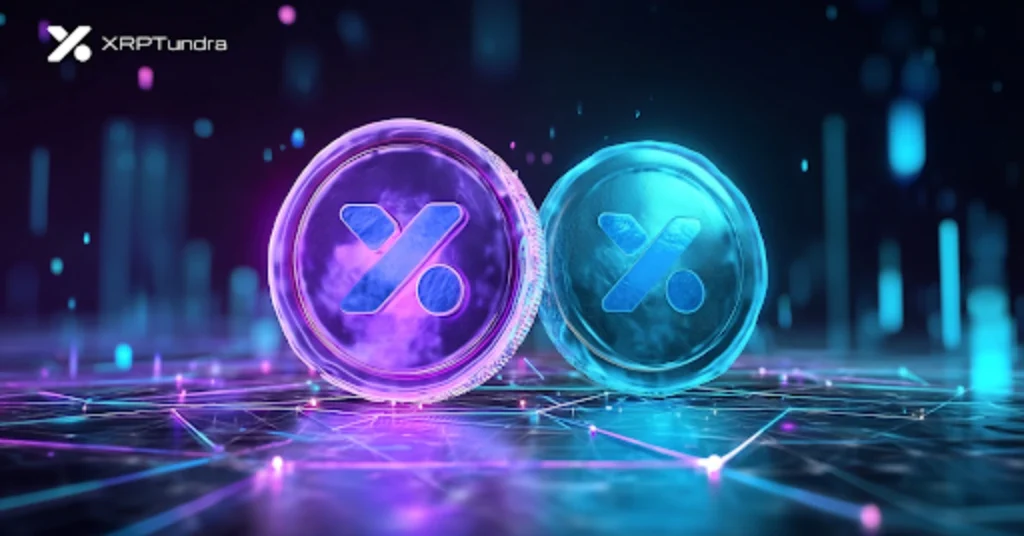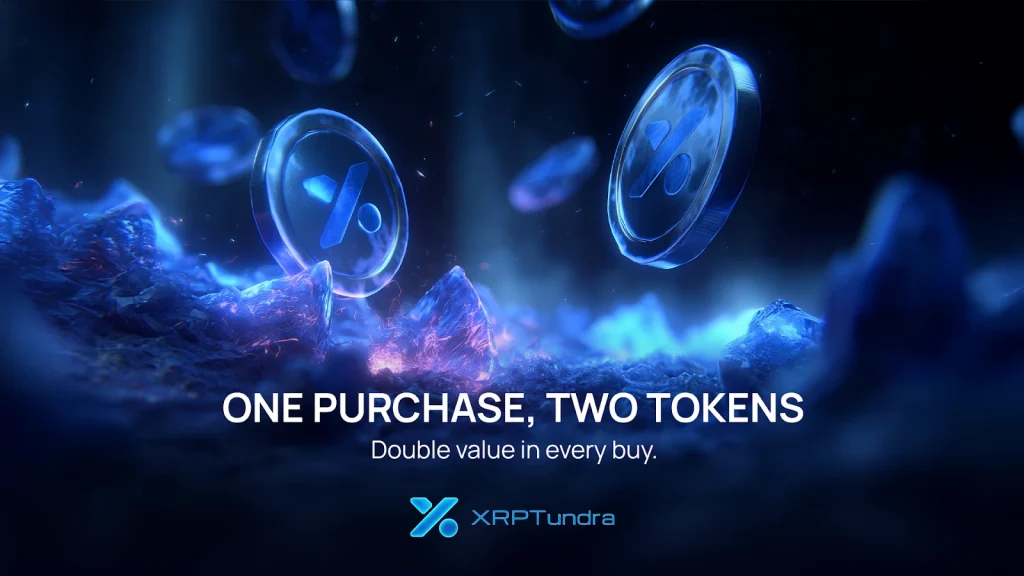Solana’s Speed Demon Finally Challenged? XRP Tundra’s Dual-Token Model Shakes Crypto Foundations
Move over Solana—there's a new architecture in town that's making blockchain purists do a double-take. XRP Tundra's dual-token system isn't just another tech upgrade; it's a fundamental rethink of how networks handle value and utility.
The Scalability Breakthrough
While Solana's been boasting about transaction speeds, XRP Tundra's approach splits functionality between a stability token and a governance token. This isn't incremental improvement—it's architectural warfare. The dual-token model lets the network process transactions while simultaneously managing ecosystem growth, something single-token chains struggle with.
Market Impact Already Visible
Traders are noticing the structural advantages beyond mere price action. The separation of economic functions creates built-in stability mechanisms that pure speed-focused chains lack. It's the difference between building a sports car and designing an entire transportation system.
The Institutional Angle
Wall Street's watching this development closer than they'll admit. A dual-token system mirrors traditional finance's separation of equity and debt—something that makes compliance officers sleep easier at night. Because nothing says 'mature technology' like recreating centuries-old financial structures with extra steps.
Bottom line: Solana may have won the speed race, but XRP Tundra's playing a different game entirely. And in crypto, the most dangerous competitors are the ones changing the rules while everyone's still running the same race.

XRP Tundra enters this landscape with a different approach. Instead of trying to replicate Solana’s throughput, it pairs Solana’s speed with the reliability of the XRP Ledger. Through a dual-token system, staking vaults, and a fixed presale model, Tundra creates an architecture that unites two blockchains: one focused on performance and utility, the other on governance and reserves.
Sealevel, PoH, and the Throughput That Powers TUNDRA-S
TUNDRA-S sits on solana to exploit parallel execution and predictable block cadence. Sealevel’s account-based concurrency lets staking- and utility-related program calls run side by side as long as their read/write sets don’t collide. PoH supplies verifiable ordering so the runtime can process batches without re-litigating time. Combined with Gulf Stream and Turbine, state updates propagate in milliseconds, which is essential for timely accrual and redemption flows once staking traffic scales.

Developers also tap Solana’s compute budget model to cap heavy calls and preserve liveness during demand spikes — useful when vault interactions and reward distributions hit at epoch boundaries. This is the performance envelope TUNDRA uses for its yield-facing operations.
XRPL as Counterweight: Governance, Reserves, and XRP-Native Control
On the XRP Ledger, TUNDRA-X anchors governance and the reserve mandate. XRPL’s deterministic transaction model, canonical ordering, and lightweight fee design make it suitable for decisions that shouldn’t be exposed to volatile throughput conditions. Governance actions — parameter changes, treasury moves, or reserve audits — live where transaction semantics are conservative and tooling for institutional custody is mature.
Crucially for XRP holders, staking access is XRP-native: users keep assets on XRPL while interfacing with Tundra’s vault logic, rather than sending XRP to opaque third parties. That division — fast utility on Solana, conservative oversight on XRPL — reduces role conflict that often plagues single-token designs.
How the Twin-Token Wiring Works
Every presale purchase of TUNDRA-S includes a free allocation of TUNDRA-X, giving entrants exposure to both sides of the system from day one. Utility accrues to TUNDRA-S via Solana programs responsible for vault interactions and reward flows. Governance accrues to TUNDRA-X on XRPL, where reserves and policy choices are recorded on-ledger.

Cross-chain state is synchronized through attestations so vault state, reward schedules, and governance parameters remain consistent. Frost Keys — issued as NFTs and recognized by the staking logic — act as multipliers or term modifiers, and can be verified on-chain before any yield uplift applies. For an explainer that first spotlighted the wiring, watch the video from Token Empire.
Cryo Vaults and Frost Keys: Turning XRP Into Yield
The headline feature for XRP holders is staking through Cryo Vaults with lock options at 7, 30, 60, and 90 days and yields up to 30% APY, scaling with commitment. Assets remain on XRPL; users retain ledger-level control while the vault logic enforces term and payout conditions.
Frost Keys LAYER in flexibility by boosting rates or adjusting lock specifics, with on-chain verification ensuring the multiplier is applied only when the NFT is in the eligible wallet. Staking has not switched on yet; presale participants secure access when vaults open, ensuring early entrants are first to deploy capital into the vaults.
Phase 3 Math, Launch Targets, and the Trust Stack
The presale uses fixed economics instead of guesswork. Phase 3 offers TUNDRA-S at $0.041 plus a 17% token bonus, and each purchase includes free TUNDRA-X, referenced at $0.0205. Launch values are pre-declared — $2.50 for TUNDRA-S and $1.25 for TUNDRA-X — which sets clear upside targets. With 40% of TUNDRA-S supply allocated to presale, early participants FORM a meaningful share of circulating supply at listing.
Security due diligence is public. Smart-contract and tokenomics reviews are posted by Cyberscope, Solidproof, and Freshcoins. Identity verification is completed via Vital Block KYC. For participants, this stack offers transparent references alongside the presale’s defined price path.
TUNDRA-S on Solana delivers the execution speed to support utility and yield operations, while TUNDRA-X on XRPL grounds governance and reserves in a ledger known for reliable settlement. Together, the architecture gives XRP holders yield mechanics, dual-chain exposure, and a presale with declared launch pricing.
Website: https://www.xrptundra.com/
Medium: https://medium.com/@xrptundra
Telegram: https://t.me/xrptundra
X: https://x.com/Xrptundra
Contact: Tim Fénix, [email protected]

